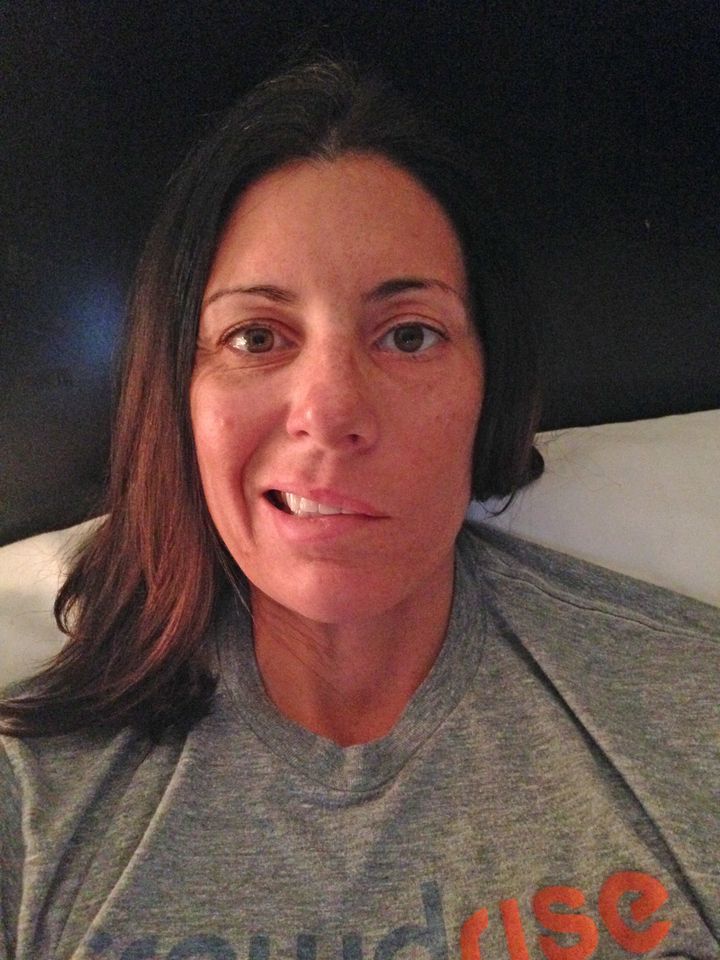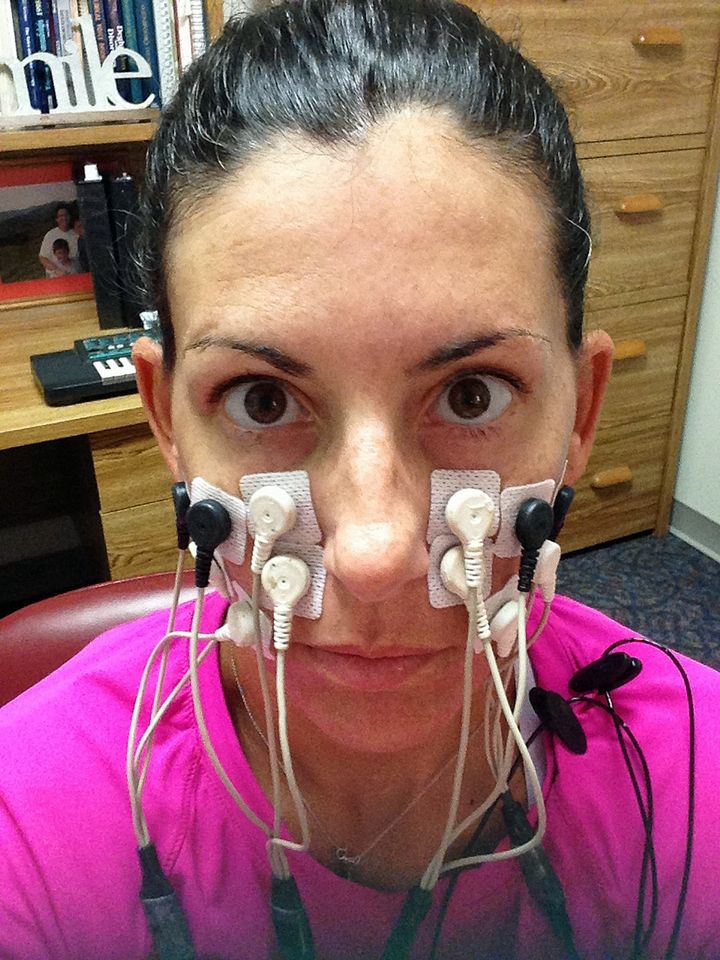A Bell’s palsy patient who was left with a drooping face after suffering from sudden facial paralysis has relearned to smile thanks to life-changing surgery.
Megan Dennis, 38, from Orlando in Florida, was left with only 17% function on the left side of her face after developing Bell’s palsy three years ago.
The condition caused by trauma to cranial nerve meant she was unable to smile, she struggled to pronounce certain letters and couldn’t shut one eyelid.

The mum, who was voted as having “the best smile” in high school, suffered with social anxiety and barely left the house at times after her face became droopy and saggy.
Dennis tried acupuncture and muscle stimulating probes to try to restore some of the movement to her face but nothing worked.
She even had numerous Botox injections into her right side to restrict movement with the hope of evening out her smile, but that was also unsuccessful.
Dennis had all but given up until last November, when she had surgery to loosen the muscles in her face called a platysma resection and to repair the damage to her eye lid.
Since then she’s been relearning how to smile and now, a year on from surgery, she’s able to smile more symmetrically.

Dennis, a full-time mum, said: “When I was first diagnosed with Bell’s palsy I found it especially hard because I used to have a large smile that stretched across my whole face and was voted as having ‘the best smile’ in high school.
“Losing that took a lot of my confidence away, it left me in a dark place where I felt like I was strange and that everyone was staring at me.
“Because my face was drooping and sagging it made it very hard for me to go out and talk to people.
“The surgery was really good, it created a much bigger, better more manageable smile for me.
“The difference between now and last year is like night and day, it’s such a massive improvement.
“Before the surgery, every time I closed my eyes the Bell’s palsy side of my face felt really tight, it felt like a rubber band.
“My upper and bottom lips are more symmetrical now and I can smile more evenly now than I could before.
“Having the surgery has definitely been life-changing, if I didn’t have it I probably wouldn’t be able to talk to parents at my daughter’s school.
“Now I’m a lot more confident and people often tell me how much better my smile looks now.”

Doctors initially believed Dennis had a sinus infection when she first visited a walk-in clinic suffering with an intense earache in 2013.
But later, it worsened, her face began to sag and she struggled to taste food – leading her to being diagnosed with Bell’s palsy.
Dennis said: “Days after the strange earache started, my face felt really funny.
“When I smiled at my husband, he told me not to panic but that we needed to go to the emergency room because the one side of my face had dropped.
“On the way I was googling my earache and difficulty smiling and the condition Bell’s palsy came up.”
Initially medics thought she had a less severe form of the condition, but it gradually worsened until scans showed she had only 17% function on the left side of her face.
Dennis felt self-conscious because of the condition, which prevented her from evenly smiling and made it difficult to enunciate certain words.
She said: “There are basic difficulties with words that begin with the letters p, b or m.
“When I meet a person face to face, I try not to use those words as I struggle to enunciate them.
“It was really difficult reading books to my daughter, Piper, because there were a lot of rhyming words which are harder to pronounce.”
But since having surgery last year, she’s been practicing a symmetrical smile and feels more confident talking to strangers because she can emote clearly.
Dennis said: “Before, my lips wouldn’t move, I couldn’t pull my face back to make a laugh line, it was just smooth, drooping and hanging down.
“When I used to meet other parents I had to tell them I had Bell’s palsy because they could see something was wrong with my face.
“But now I can smile more evenly, they don’t notice anything is different about me and it just looks like I talk a little more out of right side then left.
“Being able to smile has made things a lot easier, I’m more confident and feel like I can communicate to people a lot better.”
Bell’s Palsy affects one in every 5,000 people worldwide a year.
Dr Babak Azizzadeh, a specialist in the treatment and director of the Facial Paralysis Institute, said: “It is very important that the patient is seen immediately by either a facial nerve expert, emergency room physician, neurologist or ENT to make sure that a serious issue such as stroke or tumor is not causing the paralysis.
“The majority of people with Bell’s palsy regain normal facial nerve function but a minor group can have residual smile dysfunction that is referred to as “synkinesis” which may result in a frozen smile, tightness in neck or narrowing of the eyes.
“Platysma resection is a surgical treatment of synkinesis to reduce the activity of the platysma muscle which is one the main grimacing muscles of the face.
“In patients with synkinesis, the platysma is hyperactive and counteracts a normal smile. by reducing its activity, it can reduce the tension in the neck and improve one’s smile.”